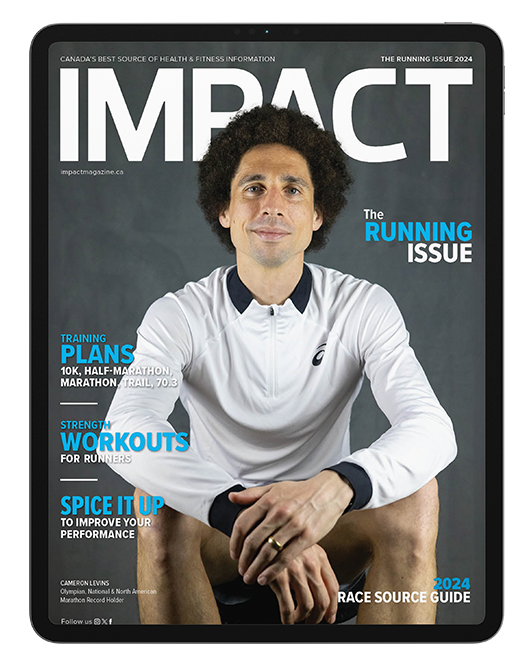You’ll often hear runners and athletes agonizing about the inflammation their bodies are experiencing. It’s almost a rite of passage to lament over sore muscles, tight hamstrings, or even common injuries associated with overuse. But a new study published in the Harvard Gazette has some athletes rethinking the way they interpret inflammation. As it turns out, some types of inflammation—and your body’s natural response to it—may actually improve your performance overall.
In the Harvard Gazette’s study, researchers found that exercise triggers inflammation, and in turn, the body reacts by producing T-cells (white blood cells that are part of the immune system), which support energy use and gives your endurance a boost. The study suggests that this reaction can lead to the body becoming more equipped to handle inflammation in general, while improving your performance in the gym. So, have we been thinking about inflammation all wrong? To get to the bottom of it and determine how to use exercise’s effect on inflammation to our advantage, we first have to understand how inflammation really works.
Understanding Inflammation
Not all inflammation is created equal, and knowing the difference between which type you’re experiencing is key. “Generally speaking, as painful as it can become, inflammation is not a bad thing,” says Dr. Victor Vongphakdy PT, BSc, MPT, CAFCI, physiotherapist and clinic director of Etobicoke, ON-based Physiomed. “In fact, inflammation is not only necessary, but imperative to the healing and remodelling of the injured area,” as is the case when you recover from a particularly gruelling workout. According to Toronto, ON-based chiropractor and medical acupuncture provider Dr. Cassandra Laleye, BSc, DC, D.Ac, inflammation is our body’s way of identifying harm or damage, and initiating a healing response. “This response should happen quickly and be short lived, usually lasting a few days or up to two weeks,” she says. “We call this ‘acute’ inflammation, and its key outcome is to kickstart healing.”
The trouble happens when acute inflammation becomes chronic and disrupts daily life, such as in the case of autoimmune disorders, rheumatoid arthritis, or a recurring injury. Toronto, ON-based physiotherapist Josh Chung, MPT, FRSC, FRAs views inflammation in dosages,” determining whether or not the level his clients are experiencing is tolerable or not. “It’ll differ for everyone, but if I see a dosage sitting above a tolerable level, that’s often when problems may arise in terms of injury,” he says. “If it’s too far below, then perhaps my client isn’t stressing the body enough to drive adaptation. We’re looking for a sweet spot where the stress that’s induced leads to positive physical adaptation.”
How Exercise Helps Chronic Inflammation
If you’ve fallen into the category of experiencing chronic inflammation, experts suggest that movement can aid in healing time and improve your quality of life. “Research has shown that exercise helps lower chronic inflammation in two distinct ways,” says Laleye. First, it supports a reduction in adipose tissue, which is a known contributor of increased inflammation. Second, exercise increases the production of proteins that reduce pro-inflammatory cells, while they also increase cells with anti-inflammatory properties. “By reducing adipose tissue and increasing protein production, there is an overall reduction in inflammation,” she says.
Vongphakdy notes that movement encourages blood flow and circulation, which can help remove inflammatory substances from an injured area, while Chung echoes this powerful exchange system. “I like to think of movement as a way to induce blood flow and fluid exchange, which then helps ‘flush’ out some of that local inflammation,” says Chung.
Inflammation and Improved Performance
Exercise’s effect on inflammation can elevate athletic performance from several angles. Movement promotes the body’s immune response, which means you’re likely to recover faster and more efficiently from sore muscles if you keep moving. “When exercise is performed, immune cells are released into the body—regular exercise equals a more consistent release of these cells, making them readily available when needed and cutting down on release time when tissue damage is present,” says Laleye.
Additionally, the increased blood flow boosts oxygenation, which helps to stave off inflammation in the first place. “Oxygenation encourages the release of growth factors that lead to tissue repair and remodelling,” says Vongphakdy. And from a tolerance level, Chung sees exercise’s effect on inflammation as a way to adapt to being able to handle increased stress on the body—a key factor in enhanced performance. “Exercise increases your tolerable amount of stress,” he says. “That’s the basis of my practice—to build humans who are better able to tolerate stressors.”
Finally, Laleye notes exercise’s integral, indirect effect on factors that contribute to manageable levels of inflammation—so you can spend more time building endurance. “Exercise aids in things like sleep quality, stress management, and prevention of chronic conditions like type 2 diabetes and heart disease—all which can have huge effects on inflammation levels,” she says.
Photography by: James Patrick Photography
You may also like: Meet the Cell Power Plant

Read This Story in Our 2024 Running Issue
Featuring Canadian Olympic, National & North American Marathon Record holder Cameron Levins. Run your way around the world with some cool, quirky and unconventional races. Train for 10 km right up to a marathon – plus a 25 km trail run and 70.3 program. Strength workouts for runners, spice it up to improve your performance and so much more.
















